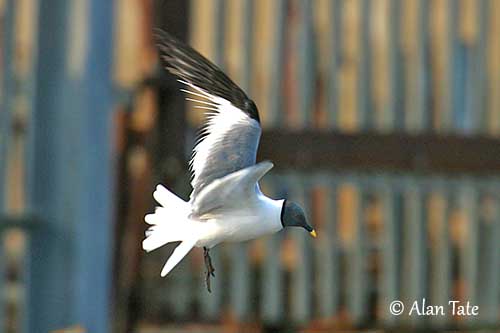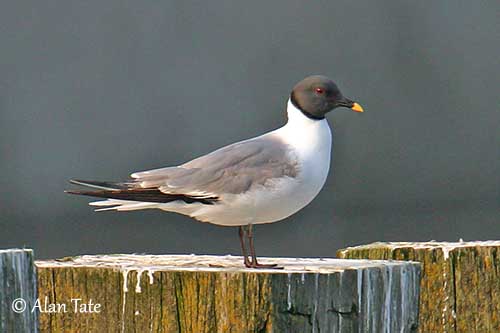
Fr: Mouette de Sabine
Ang: Sabine’s Gull
All: Schwalbenmöwe
Esp: Gaviota de Sabine
Ita: Gabbiano di Sabine
Nd: Vorkstaartmeeuw
Sd: Tärnmås
Photographers:
Roger Ahlman
Pbase Galleries Peru and Ecuador
Didier Buysse
Vision d’Oiseaux
Tom Grey
Tom Grey's Bird Pictures et Tom Grey's Bird Pictures 2
Otto Plantema
Trips around the world
Alan & Ann Tate
AA Bird Photography
Text by Nicole Bouglouan
Sources:
HANDBOOK OF THE BIRDS OF THE WORLD Vol 3 by Josep del Hoyo-Andrew Elliott-Jordi Sargatal - Lynx Edicions - ISBN : 8487334202
THE HANDBOOK OF BIRD IDENTIFICATION FOR EUROPE AND THE WESTERN PALEARCTIC by Mark Beaman, Steve Madge - C. Helm - ISBN: 0713639601
A GUIDE TO THE BIRDS OF COLOMBIA by Steven L. Hilty and William L. Brown - Princeton University Press – ISBN 069108372X
Alaska Seabird Information Series – Sabine’s Gull
Bird Web (Seattle Audubon Society)
All About Birds (Cornell Lab of Ornithology)
Wikipedia, the free encyclopaedia
What Bird-The ultimate Bird Guide (Mitchell Waite)
Sabine’s Gull
Xema sabini
Charadriiformes Order – Laridae Family
INTRODUCTION:
The Sabine’s Gull is a small, elegant, Arctic-breeding species, but it is pelagic outside this period. It is the sole member of the genus Xema, although some authors retain it in the genus Larus as Larus sabini. However, this species shows some almost unique morphological features such as the black bill and the notched tail, shared only with the Swallow-tailed Gull from Galapagos Islands. But several behaviour and ecological differences rule out the hypothesis of a close relationship between these two Laridae. The behaviour of the Sabine’s Gull resembles that of terns more than gulls.
The Sabine’s Gull’s name pays tribute to the Irish scientist Sir Edward Sabine who collected the first specimen in 1818 in NW Greenland.

DESCRIPTION OF THE BIRD:
Biometrics:
Length: 27-33 cm
Wingspan: 81-87 cm
Weight: 135-225 g
The Sabine’s Gull in breeding plumage has dark grey mantle and back, and white neck, rump and tail. On the upperwing, the inner part from carpal to scapulars is dark grey like the back, whereas the outer primaries are black with white tips, involving a contrasting, conspicuous in flight, white triangle between the dark grey area and the primaries.
The underparts are pure white with light pink wash at the beginning of the breeding season. The underwing is whitish, contrasting with the black subterminal markings of outer primaries.
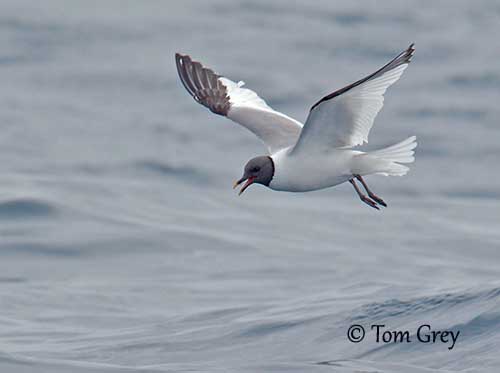
The head shows a beautiful dark grey hood, narrowly bordered black between head and neck.
The bill is black with conspicuous yellow tip and red gape. The eyes are dark brown surrounded by red eyering. Legs and webbed feet are blackish-grey.
Male and female are similar, with male slightly larger than female.
The Sabine’s Gull in winter has dusky shading over nape and ear-coverts. On the wings, the worn primaries lack the white tips.
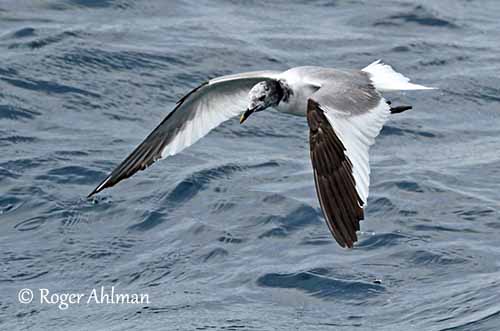
The juvenile has black bill including the tip. The white tail is slightly notched and shows a black terminal band. Mantle, forewing, sides of head, neck and breast are brownish. This plumage is retained through the autumn. The underwing shows a dusky band on the greater underwing coverts. Legs and feet are pinkish.
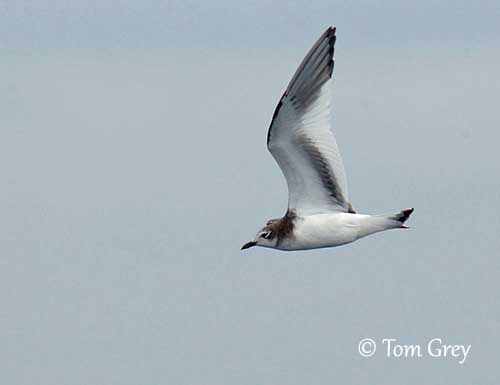
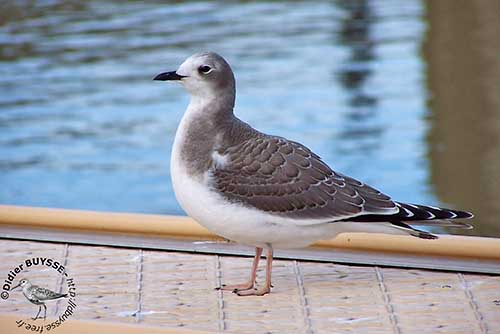
The first winter (January to May) resembles juvenile but it has adult-type head/neck pattern, and the mantle becomes plain grey while the wing-coverts are bleached brown. Breast and hindneck may be tinged grey.
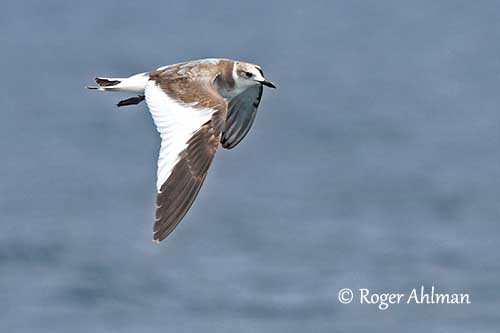
SUBSPECIES AND RANGE:
The Sabine’s Gull has four subspecies, although some authors consider this species as monotypic. The races differ little, and become darker from E Canada east to Alaska.
X.s. palaearctica occurs in Spitsbergen E to Taymyr Peninsula and Lena Delta.
X.s. tschukstchorum is found in NE Russia, on Chukotskiy Peninsula.
X.s. woznesenskii occurs in NE Siberia (Gulf of Anadyr) to Alaska. This race is the darkest with extreme slaty upperparts and very restricted white tips to primaries.
X.s. sabini (described) breeds in Arctic Canada to E Greenland. It winters in SE Atlantic off SW Africa (Benguela Current region) and in Pacific off NW South America (Humboldt Current region).
HABITAT:
The Sabine’s Gull breeds in tundra near pools and marshes close to the coast. It favours areas with ponds and shallow tidal mudflats.
During migration and winter, it occurs mainly at sea, usually a few miles offshore, over the continental shelf. They often gather on upwelling of cold water near the coastlines, south of the Equator.
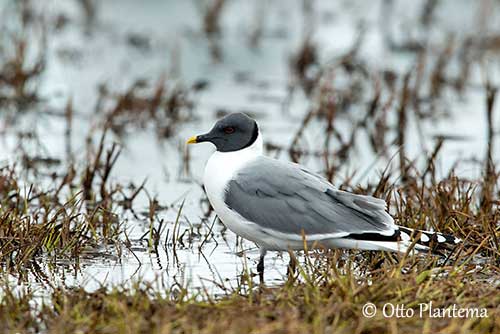
CALLS AND SONGS: SOUNDS BY XENO-CANTO
The Sabine’s Gull gives a tern-like grating “krrrr” away from the breeding grounds. This call, similar to that of Arctic Tern, is frequently heard.
BEHAVIOUR IN THE WILD:
The Sabine’s Gull feeds primarily on invertebrates such as aquatic insects. It also takes small fish, and occasionally eggs and chicks of other bird species.
Terrestrial preys are taken in marshes, and seeds and other plant material are eaten at breeding sites when the ground is still snow-covered at time of arrival.
During migration and winter, the Sabine’s Gull occurs at sea and is truly marine. They feed in large, sometimes mixed-species flocks over the open ocean. They also follow the fishing vessels to feed on fish discards, and they also take carrion.
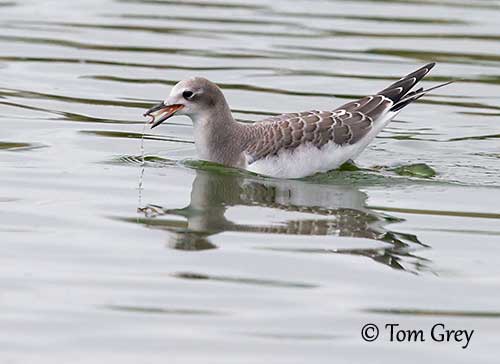
The Sabine’s Gull forages singly or in pairs during the breeding season. They forage on land, in fresh water, and sometimes in brackish water.
It feeds by dipping and picking from water surface while flying or swimming. During summer, it feeds by walking on tidal flats and in marshes. In shallow water, it sometimes spins in circles in order to disturb and catch food items from the bottom.
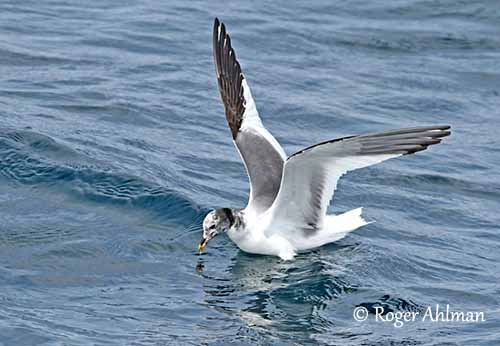
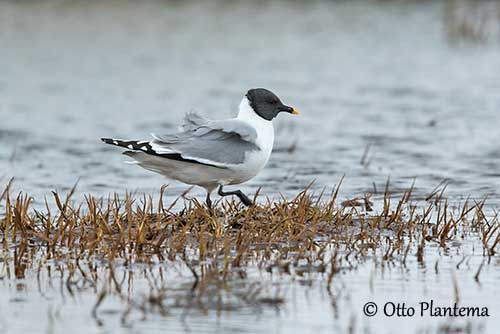
Several courtship displays can be observed at the beginning of the breeding season. The Sabine’s Gull returns to the breeding grounds in late May/early June, and the birds often nest close to the previous year’s site.
The male attracts the female by giving long call while bowing and arching the neck. Courtship feeding may occur too.
They are colonial breeders. The colonies may include small groups of up to 15-20 nests, usually placed a metre apart. But they also nest as single pairs, often with the Arctic Tern.
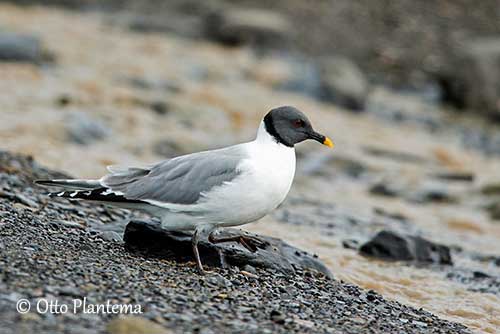
The Sabine’s Gull is a trans-equatorial migrant, and migrates in flocks of a few to hundreds of birds, and usually offshore. The birds from Siberia and Alaska migrate through Bering Sea and Bering Strait, along the Californian coast to W South America. In the same way, they are reported off the Japanese Pacific coast, but as a rare passage migrant in pelagic waters in the north. Autumn storms sometimes drive numerous birds onto mainland coasts including W Europe, North and Baltic Seas, and Scandinavian coasts.
The Sabine’s Gull has buoyant, tern-like flight action. The flight is graceful with fairly rapid, continuous wingbeats.
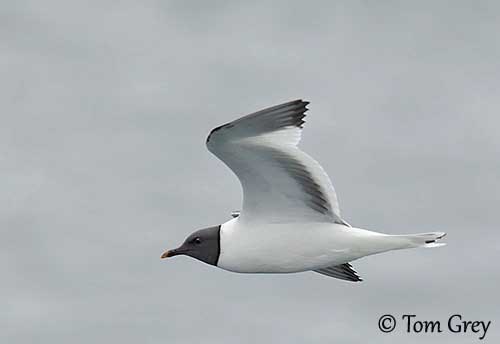
REPRODUCTION OF THIS SPECIES:
The laying occurs from June, depending on latitude and snow cover. The Sabine’s Gull nests in small colonies of 15-20 pairs or as single pairs in arctic and subarctic areas. The nest-site is usually in swampy, low-lying tundra, tidal marshes or low-lying seacoasts, and often near fresh water.
The nest is placed on rocky or bare ground, or ground covered with grass or moss and near water’s edge. It is made with grass in a depression.
The female lays 1-3 olive-green eggs with dark markings. Both adults incubate during 23-25 days. At hatching, the chicks are golden brown above, with spotted and streaked crown and lower back. Underparts are brown with whitish breast and belly. They leave the nest about three days after hatching, and follow their parents to the water’s edge. Male and female care and protect them. If they are threatened, the adults perform distraction display and injury-feigning to drive the predator away from the chicks. The main predator is the Arctic Fox.
The young are left alone about ten days after leaving the nest, while the adults start their southwards migration from late July to August.
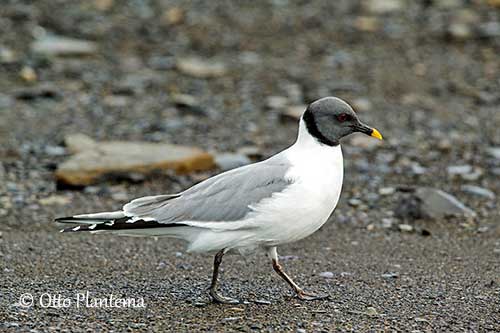
PROTECTION / THREATS / STATUS:
The Sabine’s Gull is not globally threatened in spite of human disturbance in NE Greenland, and hunting and egging in Alaska.
The global population is estimated to number 330,000/700,000 individuals (2006) and the overall population trend is stable.
The Sabine’s Gull is currently evaluated as Least Concern.
